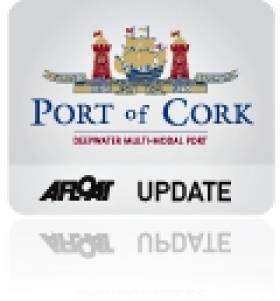Displaying items by tag: Cork Mega Port
Cork's 'Mega Port' Features In New TV3 Documentary
#PortOfCork - Have you ever wondered about the functions of the Port of Cork, the kind of people who work there, what they do and how many ships visit Cork every day and the types of cargo on board?
You can find out when you tune in to new 'fly on the wall' TV documentary series Cork Mega Port on TV3 starting Monday 28 April at 9pm.
Goldhawk Media produced the series of four hour-long episodes over four months spent living and breathing the Port of Cork.
The documentary crew followed all port employees including management, crane drivers, tug operators, pilots, launch crew and maintenance and engineering staff. Regardless of weather, they have been out on the sometimes high seas, filming the likes of Panamax-size vessels laden with cargo arriving into the port.
The series promises to give an exciting insight not just into the everyday operations of the port and the people behind it, but also highlights its importance to the region and necessity as a gateway for trade both in and out of Munster.
As well as having a serious side, the series will show the lighter side of the port by following some of the characters who have worked there for many years.
The Port of Cork prides itself on having a reliable, long-serving, experienced group of employees, and one thing that is evident within the series is the passion that exists in working at the Port of Cork.
Some staff describe working at the Port of Cork as having the "best job in the world" and from the varied services and operations that the port is involved in, it’s easy to see why.
Speaking about the new series, Port of Cork chief executive Brendan Keating said: “When we were approached by Goldhawk Media on behalf of TV3 back in 2013 and heard their experience and saw their enthusiasm, we jumped at the opportunity to get involved in this production.
"While the series shows everything the port is involved with from operations, to maintenance, the cruise business, community initiatives and our recent port redevelopment plans, it has been the level of enthusiasm from staff which has really shone through and we are very proud to share this with the people of Ireland.”
Cork Mega Port will air over four weeks on TV3 from Monday 28 April at 9pm.





























































